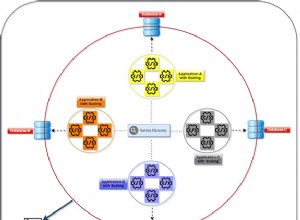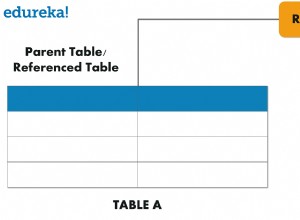संभवतः एक पेड़ का सबसे सरल और सबसे सामान्य SQL कार्यान्वयन एक स्व-संदर्भित तालिका है, उदा.:
create table tree(
id int primary key,
parent int references tree(id));
insert into tree values
(1, null),
(2, 1),
(3, 1),
(4, 2),
(5, 4);
आप इस तरह की पुनरावर्ती क्वेरी के साथ ऊपर से नीचे तक पेड़ पर चल सकते हैं:
with recursive top_down as (
select id, parent, array[id] as path
from tree
where parent is null
union all
select t.id, t.parent, path || t.id
from tree t
join top_down r on t.parent = r.id
)
select *
from top_down;
id | parent | path
----+--------+-----------
1 | | {1}
2 | 1 | {1,2}
3 | 1 | {1,3}
4 | 2 | {1,2,4}
5 | 4 | {1,2,4,5}
(5 rows)
यह भी देखें यह जवाब बॉटम-अप उदाहरण के लिए।
ईमानदारी
आप किसी ऐसे नोड को नहीं निकाल सकते जो किसी अन्य नोड का जनक है। विदेशी कुंजी पेड़ को अलग-अलग हिस्सों में विभाजित होने से रोकती है:
delete from tree
where id = 2;
ERROR: update or delete on table "tree" violates foreign key constraint "tree_parent_fkey" on table "tree"
DETAIL: Key (id)=(2) is still referenced from table "tree".
वैकल्पिक रूप से, आप यह सुनिश्चित कर सकते हैं कि आंशिक अद्वितीय अनुक्रमणिका का उपयोग करके पेड़ की केवल एक जड़ हो:
create unique index tree_one_root_idx on tree ((parent is null)) where parent is null;
insert into tree
values(6, null);
ERROR: duplicate key value violates unique constraint "tree_one_root_idx"
DETAIL: Key ((parent IS NULL))=(t) already exists.
साइकिल
आप ट्रिगर का उपयोग करके साइकिल में प्रवेश करने की संभावना को समाप्त कर सकते हैं। फ़ंक्शन जांचता है कि क्या सम्मिलित या अद्यतन नोड के पूर्वजों में से एक नोड ही हो सकता है:
create or replace function before_insert_or_update_on_tree()
returns trigger language plpgsql as $$
declare rec record;
begin
if exists(
with recursive bottom_up as (
select new.id, new.parent, array[]::int[] as path, false as cycle
union all
select r.id, t.parent, path || t.id, new.id = any(path)
from tree t
join bottom_up r on r.parent = t.id and not cycle
)
select *
from bottom_up
where cycle or (id = parent))
then raise exception 'Cycle detected on node %.', new.id;
end if;
return new;
end $$;
create trigger before_insert_or_update_on_tree
before insert or update on tree
for each row execute procedure before_insert_or_update_on_tree();
जाँच करें:
insert into tree values (6, 7), (7, 6);
ERROR: Cycle detected on node 7.
update tree
set parent = 4
where id = 2;
ERROR: Cycle detected on node 2.




